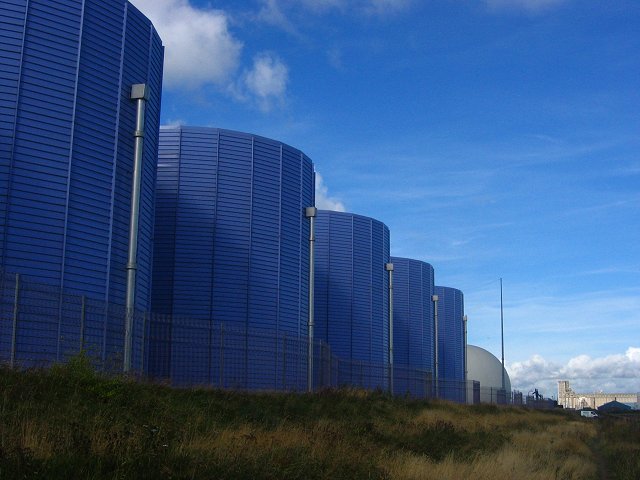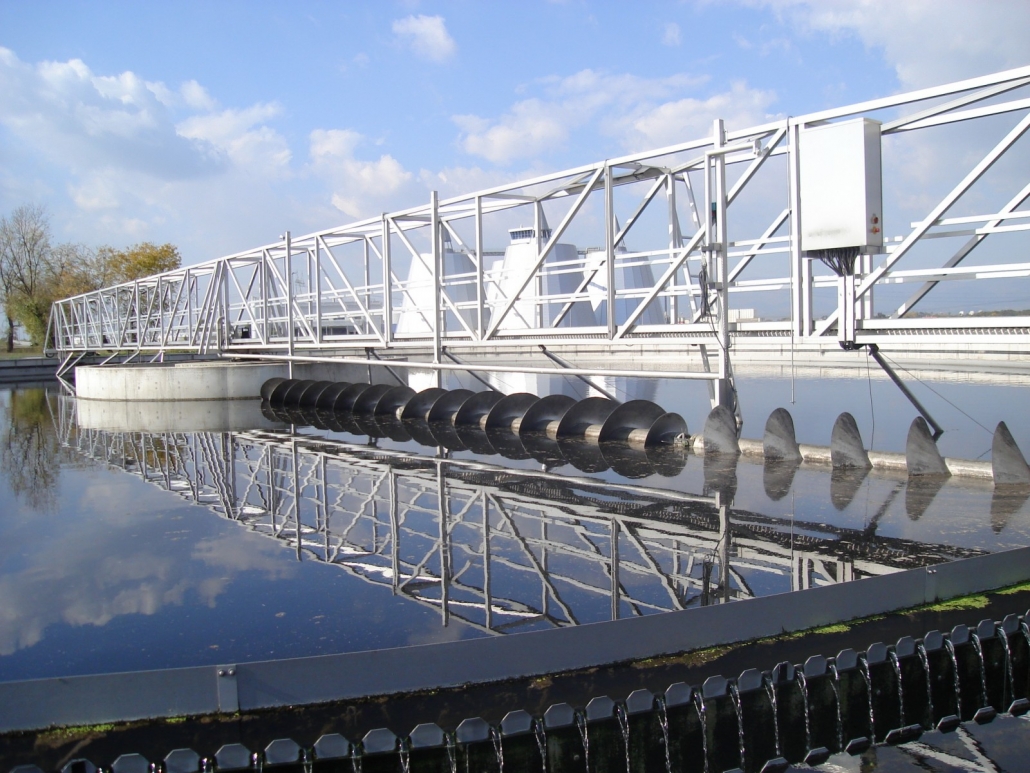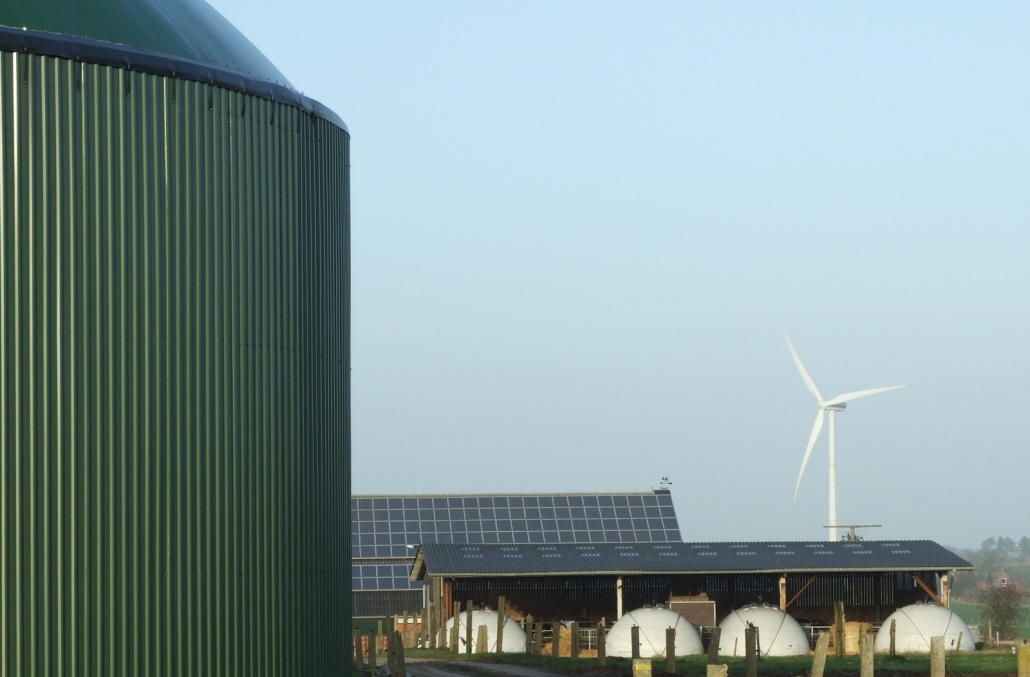U.S. utilities have been slower to adopt the energy- and emissions-saving technologies than those in other parts of the world.

Wastewater-to-energy systems start with a process called anaerobic digestion, which treatment plants have been using for ages to reduce the volume of sewage waste. Photo © Richard Webb / Wikimedia Commons
- Despite the economic advantages of these technologies and their potential environmental benefits, U.S. utilities have been slower than those in other parts of the world to capitalize on the energy embedded in wastewater.
- U.S. energy policy has done little to incentivize the growth of these technologies, relying on a patchwork of energy credit programs, tax breaks, and development spending to promote renewable energy production.
- But as the market grows, some urge caution before using wastewater to create renewable natural gas.
By Laura Gersony, Circle of Blue — August 4, 2021
Wastewater treatment plants in the United States are in a race against time.
Like all other industries, the clock is ticking for the sector to cut its carbon pollution, given President Joe Biden’s goal to halve the country’s greenhouse gas emissions by 2030 and reach net zero by 2050. To make their contribution, utilities will have to pull against strong currents. The energy needs of the wastewater sector are projected to climb during this period, due to population growth and tightening water-quality standards.
Luckily, wastewater treatment plants (WWTPs) have a source of renewable energy running right through their pipes. They can harness the chemical energy in sewage sludge to produce methane-rich biogas. Utilities can use this energy to power their own treatment works, or they can sell it back to the grid as renewable natural gas (RNG) or electricity.
For systems that can afford the upfront costs of these waste-to-energy technologies, the process is a win-win. By generating its own energy, the facility cuts its electricity bill, or even turns a profit by selling the surplus. And, because the process reduces methane emissions from the sewage and displaces fossil fuel-powered energy, utilities can slash their net emissions in the process.
“There is a much more widespread realization that the highest-cost part of treating wastewater is power,” explained David Goldwater of the engineering consulting company Stantec.
Despite the economic advantages of these technologies and their potential environmental benefits, U.S. utilities have been slower than those in other parts of the world to capitalize on the energy embedded in wastewater. Decades of energy policy decisions have left the U.S. market, now on the verge of a rapid expansion, playing catch-up on the international stage.

By some estimates, if all the WWTPs in the U.S. that currently use anaerobic digestion installed an energy recovery facility, the country could reduce its annual carbon dioxide emissions by 2.3 million metric tons. Photo © Hasan Zulic / Wikimedia Commons
How It Works
Wastewater-to-energy systems start with a process called anaerobic digestion, which treatment plants have been using for ages to reduce the volume of sewage waste. This process results in sludge that can be more easily treated and it creates biogas as a byproduct. In recent years, systems began capturing energy from biogas and used it to produce thermal energy, electricity, or RNG.
Using biogas for energy is not carbon neutral because burning the methane-rich gas still releases carbon dioxide. But it can significantly reduce net emissions. The energy research group EESI estimates that if all the WWTPs in the U.S. that currently use anaerobic digestion installed an energy recovery facility, the country could reduce its annual carbon dioxide emissions by 2.3 million metric tons. This would be equivalent to taking over 400,000 passenger vehicles off the road.
The energy savings are also immense. Researchers estimate that biogas technology alone has the potential to generate up to half of the water sector’s electricity demand. Some systems have even achieved “energy positivity,” generating more energy than they consume and selling the rest back to the grid.
Lack of Economic Incentives
The market for this technology is still nascent in the U.S. Less than one in 10 of the country’s WWTPs—disproportionately the largest ones—use biogas for energy. Of those, just a handful are net producers of energy.
One reason for the slow uptake is simply that many wastewater-to-energy technologies were developed overseas. Until recently, “we didn’t have the same level of available technology,” said Goldwater, the Stantec policy adviser. “They’re now much more cost-effective.”
But it’s also a matter of economics. U.S. energy policy has done little to incentivize the growth of these technologies, relying on a patchwork of energy credit programs, tax breaks, and development spending to promote renewable energy production. Meanwhile, some European countries have leaned heavily on feed-in tariffs, in which renewable energy generators are guaranteed an above-market price for the electricity that they add to the grid.
Matt Tomich, president of the nonprofit Energy Vision, said that this incentive structure explains the international disparity in biogas use. “That’s why you see hundreds if not thousands of digesters—small, medium, and large—across all of northern and western Europe. It’s that certainty and that price premium that are combined to create a very favorable market,” he said.
The U.S. market lacks that certainty. Some policies—such as the federal Renewable Fuel Standard or RFS, which mandates that transportation fuel sold in the U.S. contains a certain amount of renewable fuel—have created economically viable routes to sell biogas as RNG. But this market, too, stands on shaky ground.
“The biggest issue for municipalities is the inherent uncertainty and volatility around a market mechanism like this,” Tomich said. When considering biogas-to-RNG projects, “for as long as I can remember, it’s been this question of, ‘Will the RFS be there next year?’”
About half of the states have renewable energy credit programs, which give renewable energy producers a “credit” for selling energy back to the grid. The programs have given these technologies a boost, Goldwater said. But they are still a far cry from the strong incentives that can be seen overseas.
“We certainly don’t have the same robust incentive programs,” he said. “If we want to change the dynamic of renewable energies, and our carbon footprint, and all of these things, we need to provide incentives and credits to help spur it along.”
Further complicating the picture is that many WWTPs in the U.S. are very small. About three-quarters of WWTPs treat less than one million gallons of wastewater per day. At this scale, an EPA report noted, it is difficult to get a timely return on investment. Spending several million dollars on an anaerobic digester is an expense that, in the current market, wouldn’t pay dividends for most small utilities.

Biogas plants are a common sight on farms in Germany. Decades of energy policy decisions have left the U.S. market, now on the verge of a rapid expansion, playing catch-up on the international stage. Photo © Florian Gerlach / Wikimedia Commons
A Growing Market
This is not for lack of technology. Junhong Chen, the lead water strategist at Argonne National Laboratory, said that the concept of using wastewater for energy is feasible at WWTPs of every size, climate zone, and more.
“I don’t think there’s any show-stopper,” he said. “You’d have to tune system parameters a bit from region to region. But the concept is applicable across the nation and across the world.”
Chen said that given continued research and lower costs, it is “realistic” to expect these technologies to eventually bring the water sector to net-zero emissions.
John Ord, who works on WWTP projects at Stantec, agreed. “Technologically, it is always feasible. All it really depends upon are the economic drivers,” he said.
From a technological standpoint, the field has never looked more promising. Recent advancements have shown that when wastewater is combined with other organic inputs—like food scraps, grease, and farm waste—the reaction becomes even more powerful. This is the strategy used by Oakland, California, which saves $3 million on energy bills annually.
Tomich said that, as a rule of thumb, WWTPs can produce around 60 percent of their own energy demand and 100 percent of the heat necessary to operate the plant. Those percentages increase even more when you add organic waste into the mix.
Lawmakers are also taking interest. The bipartisan infrastructure bill, which is currently being debated in the Senate, includes a pilot program that would award 15 publicly owned treatment works up to $4 million to create or improve waste-to-energy systems.
The Role of RNG in a Decarbonized Future
As the market grows, some urge caution about the kinds of energy that biogas projects are used for.
Specifically, some environmentalists oppose investments in RNG, noting that it can justify an expansion of natural gas infrastructure when the country should be doing the opposite. They argue that energy is better put towards electrification.
Tom Cyrs, a researcher with the World Resources Institute, devised a set of rules to avoid these perverse incentives and determine when it is best, from an emissions perspective, to pursue an RNG project.
“Are they capturing and avoiding more methane emissions than would otherwise occur? Are they resulting in a more productive use of these wastes than would otherwise occur? And are they piggybacking on fossil fuel infrastructure, rather than resulting in the buildout of a large number of new natural gas pipelines?” he said. “The answer to those questions may very well be positive for a lot of these projects. But there is a need to evaluate them on a case-by-case basis.”
Cyrs added: “These kinds of projects can be an economically productive way to zero out or significantly reduce those emissions sources, and produce a fuel that can displace dirtier fossil fuels. RNG is not a silver bullet, but it can contribute alongside these other really important strategies.”
Ultimately, as long as humans eat food, we’re going to produce methane-rich wastewater. So as climate deadlines inch closer, Tomich said, the task is simple: to do everything possible to maximize its productive use.
Laura Gersony covers water policy, infrastructure, and energy for Circle of Blue. She also writes FRESH, Circle of Blue’s biweekly digest of Great Lakes policy news, and HotSpots H2O, a monthly column about the regions and populations most at-risk for water-related hazards and conflict. She is an Environmental Studies and Political Science major at the University of Chicago and an avid Lake Michigan swimmer.



